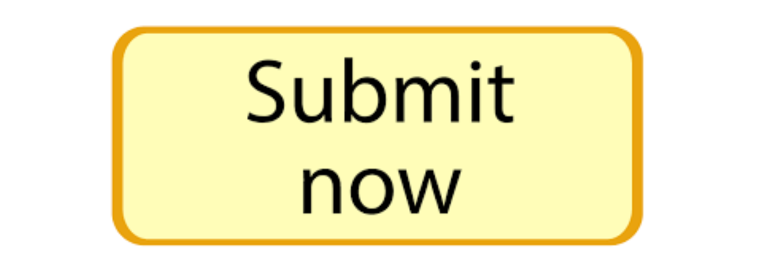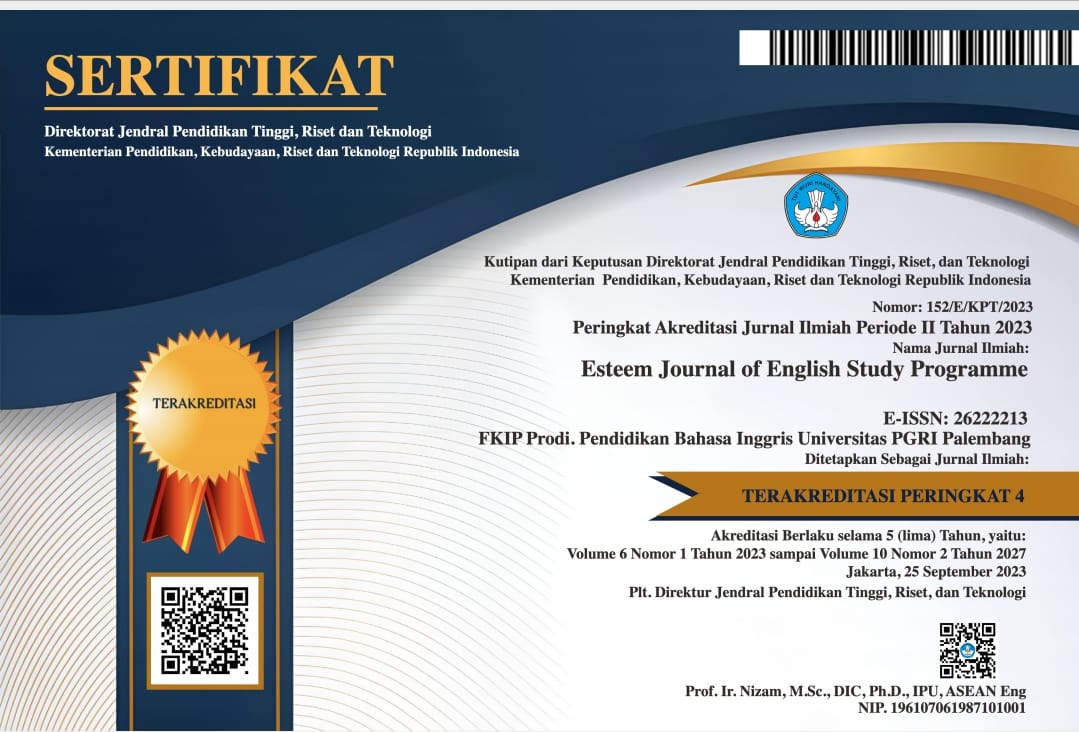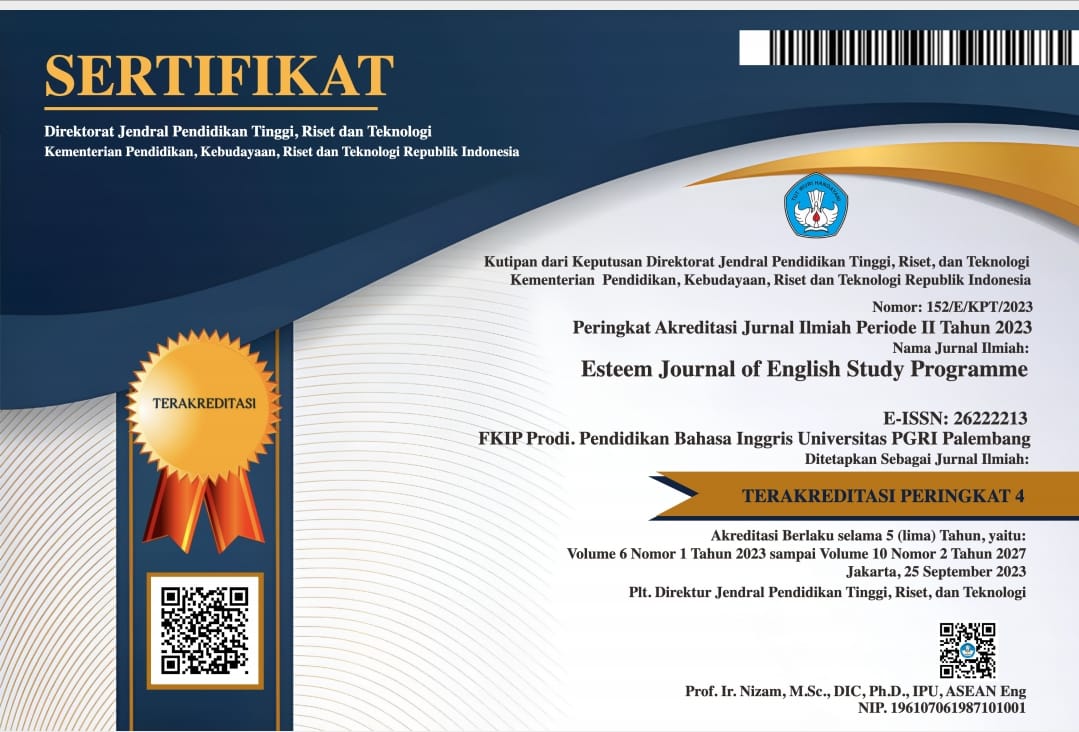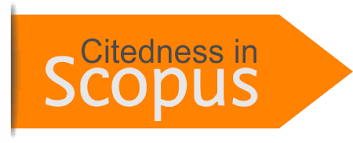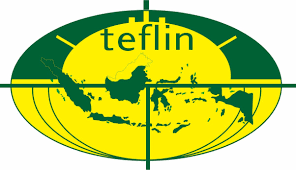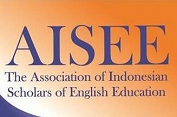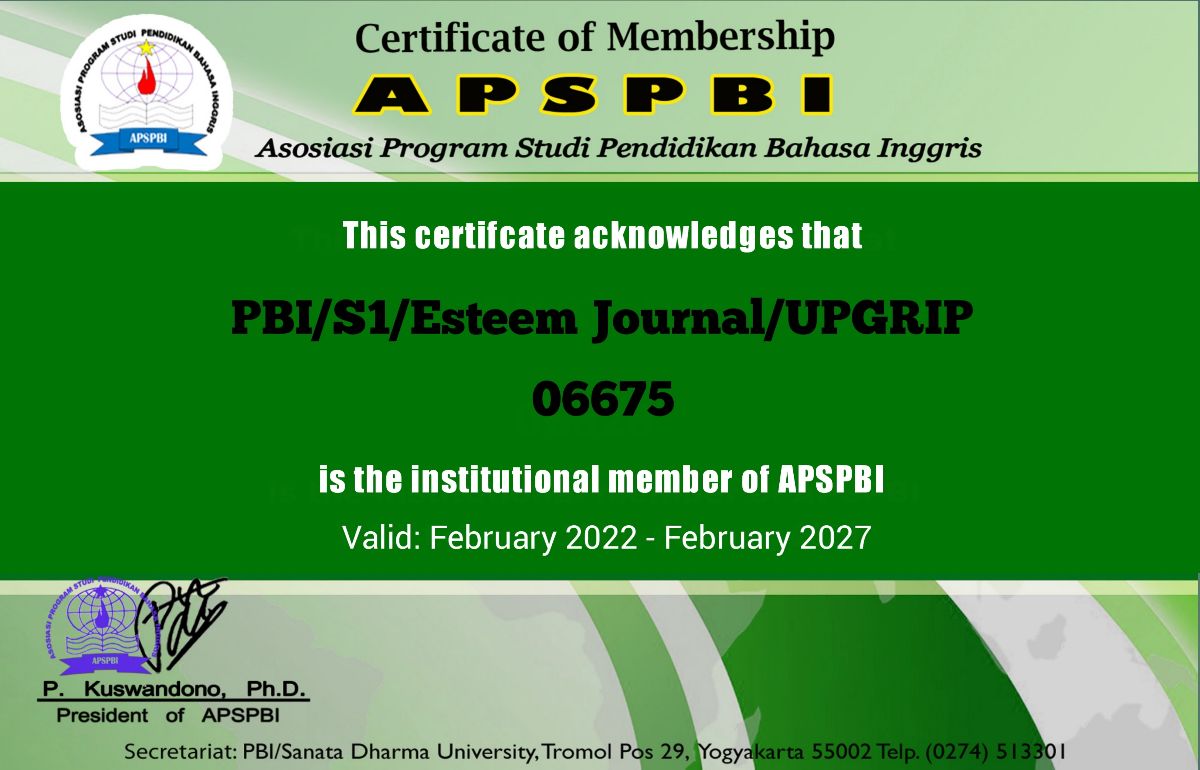CODE SWITCHING & CODE MIXING IN RITSUKI’S VLOG ON DIGITAL MEDIA TIKTOKː A STUDY OF SOCIOLINGUISTICS
DOI:
https://doi.org/10.31851/esteem.v8i1.18124Keywords:
Code Switching, Code Mixing, Sociolinguistics, Ritsuki’s TikTokAbstract
In the digital era, multilingualism is increasingly visible on social media platforms like TikTok. This study examines Code Switching and Code Mixing in multilingual communication by analyzing content from the TikTok account Mega Kenichiro Official (Ritsuki’s Vlog) through a sociolinguistic perspective. The objective is to understand how speakers use Indonesian, Japanese, and Javanese in daily interactions and its impact on digital communication. Using a qualitative approach, the study analyzed 20 selected vlogs through note-taking, focusing on intra-sentential and intra-lexical code mixing, as well as inter-sentential code switching. The conversations were classified based on speakers and language patterns. The findings show that Japanese words are frequently mixed into Indonesian sentences, while code switching between Indonesian and Javanese occurs mostly in complete sentences. Additionally, the influence of these linguistic patterns extends to audience interactions, as reflected in their comments. This study concludes that multilingualism plays a significant role in shaping online discourse, making digital media a dynamic space for language interaction. Future research should explore the educational implications of code switching and code mixing in language learning.
References
Adawiah, R., Nasrah, N., Zamzam, N., AR, T., & S., M. (2023). Code Mixing Used By K-Pop Lovers on Social Media. Inspiring: English Education Journal, 6(1), 36–45. https://doi.org/10.35905/inspiring.v6i1.4351
Anik, J., Noodiana, & Wahyuning, E. (2021). TikTok Function in the Millennial Era. International Joint Conference on Arts and Humanities.
Astri, Z., & Fian, A. (2020). The Sociolinguistics udy on the Use of Code Mixing in Gita Savitri Devi’s Youtube Channel Video. Scope of English Language Teaching, Literature and Linguistics, 3(2), 83–92.
Cahyono, A. O. maharani, & Perdhani, W. C. (2023). Using TikTokin EFL Class: Students’ Perceptions. Journal of English Education and Teaching (JEET).
Cohn, A. C., Vogel, R. C., & Abtahian, M. R. (2022). Patterns of Variation in Jakarta Indonesian: Linguistic and Social Dimensions. Nusa, 73, 1–28. https://doi.org/10.15026/122194
Dwipa, E., Khoirunisa, R. A. N., Al-Haqq, F. G., Aqilah, aghna turhah, & Maulidya, R. A. (2024). The Implementation of TikTok as Medium for Learning of English Vocabulary: The Perspective of Department English Education Students. Jurnal Onoma: Pendidikan, Bahasa Dan Sastra.
Fadilah, I. A., Jaya, A., & Uzer, Y. (2023). Visual Representation and Comprehension: the Exploration of Multimodal Text To Energize Reading of the Tenth Grade Students’ At State Vocational High School 5 of Palembang. Esteem Journal of English Education Study Programme, 6(1), 125–130. https://doi.org/10.31851/esteem.v6i1.10226
Fanani, A., & Ma’u, J. A. R. Z. (2018). Code switching and code mixing in English learning process. LingTera, 5(1), 68–77. https://doi.org/10.21831/lt.v5i1.14438
Hoffman, C. (2014). An Introduction to Bilingualism. Routledge.
Holmes, J. (1994). An Introduction to Sociolinguistics. In Routledge (Vol. 70, Issue 3). https://doi.org/10.2307/416511
Long, M. (1985). A role for instruction in second language acquisition: task-based language teaching. Multilingual Matters.
Maftukhin. (2020). The Use of Code Switching and Code Mixing in EFL Classes. 3(1), 245–258.
Mckinney, C., Zavala, V., & Makoe, P. (2024). Introduction: Critical and decolonial approaches to multilingualism in global perspective. In The Routledge Handbook of Multilingualism.
Morrel, C. C. (2022). TikTok as Art: Visual Culture Art Education in an Afterschool ArtTikTok as Art: Visual Culture Art Education in an Afterschool Art ProgramProgram.
Patty, J., & Noija, L. F. . (2023). Social Media Revolution : Tiktoks Impact On English Language Learning. Jurnal Review Pendidikan Dan Pengajaran.
Rahma, N. (2023). Analisis Alih Kode dan Campur Kode dalam Media Sosial Twitter Akun @KuntoAjiW. Ranah Research : Journal of Multidisciplinary Research and Development, 5(2), 156–161. https://doi.org/10.38035/rrj.v5i2.402
Rajend, M. (2019). Sociolinguistics. In Sustainability (Switzerland) (Vol. 11, Issue 1). Cambridge University Press (CUP).
Rama, M. A., Hamdani, Z., & Prihatini, C. (2023). Students’ Perception On The Use Of Tiktok As An Effective Learning Media In Improving Students’ Vocabulary. Journal on Education. https://doi.org/https://doi.org/10.31004/joe.v5i4.4047
Sari, A., Jaya, A., Hermansyah, H., & Mortini, A. V. (2022). Using Mixidea Online Debating Strategy To Promote the Students’ Speaking Ability. Esteem Journal of English Education Study Programme, 5(2), 298–303. https://doi.org/10.31851/esteem.v5i2.8591
Sulianur, S., Qalyubi, I., & Sabarun, S. (2022). the Use of Code-Switching and Code-Mixing in Public Speaking Class At Higher Education Islamic. PROJECT (Professional Journal of English Education), 5(4), 806–816.
Tanjung, F. Z. (2020). Teachers’ Views on the Integration of Technology in Efl Classroom. IJIET (International Journal of Indonesian Education and Teaching), 4(2), 208–215. https://doi.org/10.24071/ijiet.v4i2.2344
Wardhaugh, R. (2015). An Introduction To Sociolinguistics (7th ed.). Blackwell.
Zulkifli, N. N., Letchumanan, M., Kamarudin, S., Halim, N. D. A., & Hashim, S. (2022). A Review: The Effectiveness of Using TikTok in Teaching and Learning. International Conference on Computers in Education.
Downloads
Published
Issue
Section
License
Copyright (c) 2025 Dixy Putri Wardhani, Yanuar Arifin

This work is licensed under a Creative Commons Attribution-NonCommercial-ShareAlike 4.0 International License.
Copyright Notice
Authors who publish with this journal agree to the following terms:
In order to assure the highest standards for published articles, a peer review policy is applied. In pursue of the compliance with academic standards, all parties involved in the publishing process (the authors, the editors and the editorial board and the reviewers) agree to meet the responsibilities stated below in accordance to the Journal publication ethics and malpractice statement.
Duties of Authors:
- The author(s) warrant that the submitted article is an original work, which has not been previously published, and that they have obtained an agreement from any co-author(s) prior to the manuscript’s submission;
- The author(s) should not submit articles describing essentially the same research to more than one journal;
- The authors(s) make certain that the manuscript meets the terms of the Manuscript Submission Guideline regarding appropriate academic citation and that no copyright infringement occurs;
- The authors(s) should inform the editors about any conflict of interests and report any errors they subsequently, discover in their manuscript.
Duties of Editors and the Editorial Board:
- The editors, together with the editorial board, are responsible for deciding upon the publication or rejection of the submitted manuscripts based only on their originality, significance, and relevance to the domains of the journal;
- The editors evaluate the manuscripts compliance with academic criteria, the domains of the journal and the guidelines;
- The editors must at all times respect the confidentiality of any information pertaining to the submitted manuscripts;
- The editors assign the review of each manuscript to two reviewers chosen according to their domains of expertise. The editors must take into account any conflict of interest reported by the authors and the reviewers.
- The editors must ensure that the comments and recommendations of the reviewers are sent to the author(s) in due time and that the manuscripts are returned to the editors, who take the final decision to publish them or not.
Authors are permitted and encouraged to post online a pre-publication manuscript (but not the Publisher final formatted PDF version of the Work) in institutional repositories or on their Websites prior to and during the submission process, as it can lead to productive exchanges, as well as earlier and greater citation of published work (see The Effect of Open Access). Any such posting made before acceptance and publication of the Work shall be updated upon publication to include a reference to the Publisher-assigned DOI (Digital Object Identifier) and a link to the online abstract for the final published Work in the Journal.




